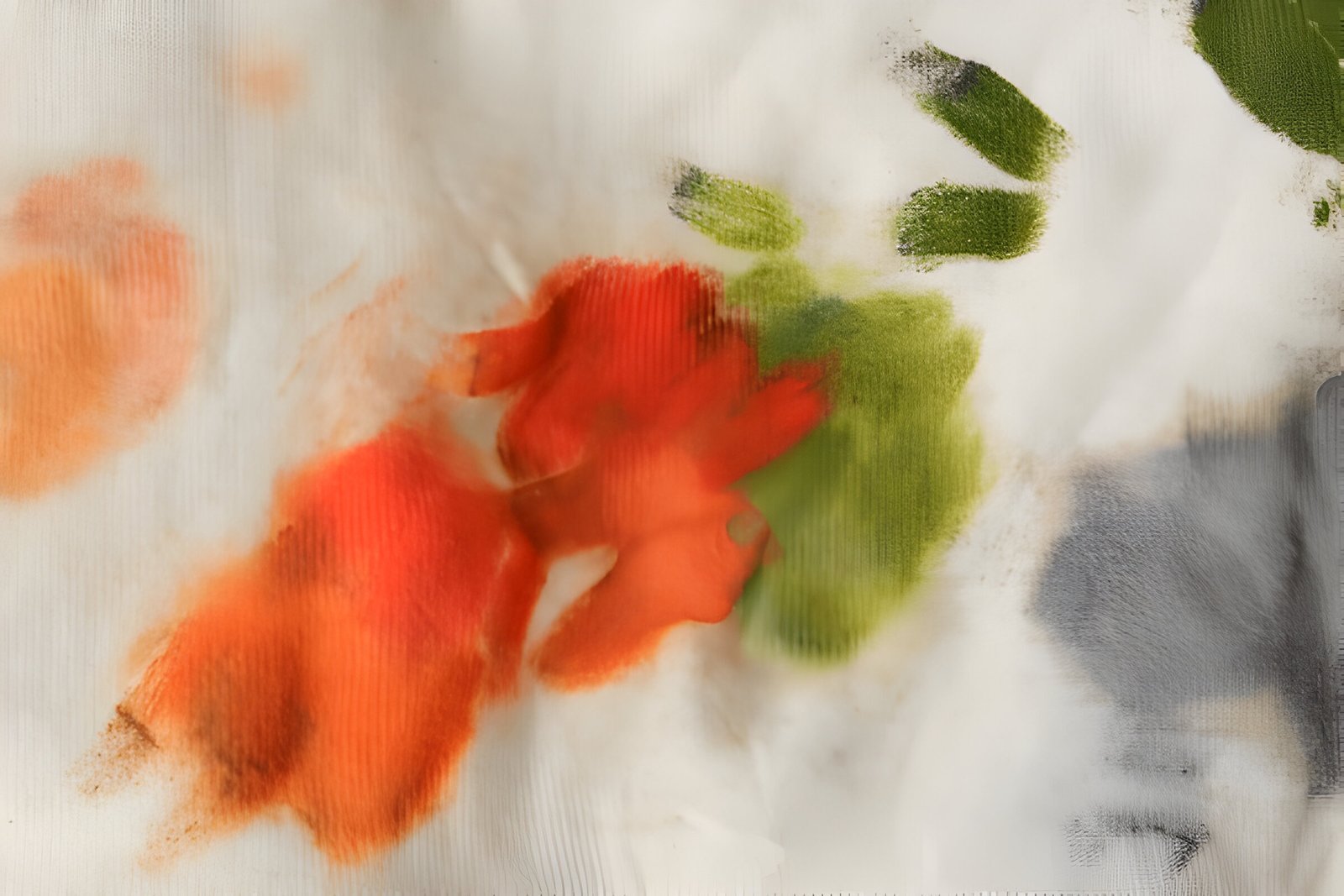Image Credit: Shutterstock
Introduction
Imagine this scenario—you’ve just finished a fun and creative painting session, only to realize that your favorite shirt is now adorned with vibrant splashes of acrylic paint. Panic sets in as you rush to find a way to remove the stain without reaching for the dreaded bleach. If you’ve been there, you’re not alone. Acrylic paint stains are a common issue for anyone who loves to get creative with colors. But fear not, because this blog post is here to provide you with effective, bleach-free solutions to save your clothes from those stubborn paint stains. In this guide, you’ll learn all about how to get acrylic paint out of clothes and why traditional stain removers aren’t always effective, and step-by-step methods to treat, wash, and care for your paint-stained garments.
Understanding Acrylic Paint and Fabric
What Makes Acrylic Paint Unique?
Acrylic paint is popular for its versatility and quick-drying properties. Made from pigment suspended in an acrylic polymer emulsion, it adheres strongly to various surfaces, including fabric. This strong adhesion is what makes acrylic paint stains so challenging to remove. Once the paint dries, it forms a plastic-like layer that clings to the fibers of your clothing.
Behavior of Acrylic Paint on Different Fabrics
Different fabrics react differently to acrylic paint. Natural fibers like cotton and linen are more absorbent and can hold onto the paint more stubbornly. Synthetic fabrics, like polyester, may repel the paint slightly but still require careful treatment to avoid damage.
The Limitations of Traditional Stain Removers
While traditional stain removers or bleach might seem like a quick fix, they can be harsh on fabrics and may not effectively break down the acrylic paint. Bleach, in particular, can weaken fabric fibers and cause discoloration, making it an undesirable choice for many.
Also Read: How to Make a Gum Wrapper Heart: Step-by-Step Guide
Pre-treating Acrylic Paint Stains
Handling Fresh Paint Stains
If you catch the stain while the paint is still wet, you’re in luck. First, place a clean cloth or paper towel underneath the stained area to prevent the paint from spreading. Use a blunt knife or spoon to gently scrape off excess paint. Be careful not to rub the paint deeper into the fabric. Rinse the stained area under cold running water to flush out as much paint as possible.
Dealing with Dried Paint Stains
For dried acrylic paint stains, the process requires a bit more effort. Start by gently scraping off any dried paint using a blunt knife. Next, apply a small amount of rubbing alcohol or an alcohol-based hand sanitizer to the stain. Use a clean cloth to blot the area, working from the outside of the stain inward to prevent spreading. Allow the alcohol to sit for a few minutes to soften the paint.
Recommended Tools and Products
- Blunt knife or spoon for scraping off excess paint.
- Cold running water for initial rinsing.
- Rubbing alcohol or hand sanitizer to soften dried paint.
- Clean cloths or paper towels to blot and absorb excess paint.
Washing Strategies
Choosing the Right Washing Cycle
After pre-treating the stain, it’s time to wash the garment. Select a washing cycle that is appropriate for the fabric type. Delicate fabrics should be washed on a gentle cycle, while sturdier fabrics can handle a regular cycle. Avoid using hot water, as it can set the stain further. Opt for cold or lukewarm water instead.
Using the Right Detergent
Choose a heavy-duty liquid detergent known for its stain-removing capabilities. Apply a small amount of detergent directly to the stained area and gently rub it in with your fingers or a soft-bristled brush. Allow it to sit for about 10 minutes before placing the garment in the washing machine.
Rinsing and Repeating
If the stain persists after the first wash, don’t panic. Repeat the washing process, focusing on the stained area with additional detergent. Sometimes, it takes a couple of attempts to fully remove stubborn acrylic paint stains.
Also Read: How to Add Tickets to Apple Wallet: Beginner’s Guide
Post-Wash Care
Inspecting for Residual Stains
Once the washing cycle is complete, carefully inspect the garment for any remaining traces of the stain. Hold the fabric up to a light source to ensure you don’t miss any faint remnants.
Dealing with Persistent Stains
If you still notice some stain, repeat the pre-treatment and washing process. For particularly stubborn stains, consider using a commercial stain remover specifically designed for paint. Follow the product’s instructions carefully to avoid damaging the fabric.
Drying and Ironing Tips
After successfully removing the stain, it’s important to dry the garment properly. Air drying is the safest option to prevent any heat-related issues. If you must use a dryer, choose a low-heat setting. Avoid ironing over the stained area until you are certain the stain is completely gone, as heat can set any residual paint.
Alternative Methods
Natural Remedies for Paint Stains
Several household items can help remove acrylic paint stains. White vinegar, for example, is a mild acid that can break down paint particles. Mix equal parts white vinegar and water, apply to the stain, and blot with a clean cloth.
Cautions and Considerations
When using natural remedies, always test a small, inconspicuous area of the fabric first to ensure it won’t cause discoloration or damage. Some fabrics may react differently, so proceed with caution.
Household Products to Try
- White vinegar mixed with water for a gentle stain remover.
- Baking soda paste (baking soda mixed with water) for scrubbing away dried paint.
- Hair spray with a high alcohol content can also work wonders on acrylic paint stains.
Preventing Future Stains
Protective Clothing and Workspaces
The best way to deal with acrylic paint stains is to prevent them altogether. Wear old clothes or an apron when painting. Lay down protective coverings on your workspace to catch any spills or splatters.
Smart Painting Practices
Be mindful of your surroundings and work area. Keep a damp cloth nearby to quickly wipe away any accidental paint spills.
Cleaning Up Quickly
Acting fast is key to preventing stains from setting. If you notice paint on your clothes, address it immediately to increase your chances of successful removal.
Conclusion
Acrylic paint stains on clothes can be a daunting challenge, but with the right approach, they can be managed effectively without resorting to bleach. By understanding the nature of acrylic paint, pre-treating stains promptly, using the appropriate washing techniques, and exploring alternative methods, you can save your favorite garments from being ruined. Remember, prevention is key, so take necessary precautions while painting to avoid future stains. Have your own tips or experiences with removing acrylic paint from clothes? Share them with us! For more insightful content and updates, sign up for our newsletter today.
Also Read: Top Tips to Locate a Physical Training Instructor Near Me
FAQs
Q1: Can I use hot water to remove acrylic paint stains?
A: It’s best to avoid using hot water as it can set the stain further. Opt for cold or lukewarm water when rinsing and washing acrylic paint stains.
Q2: Are there any fabrics that should be specially handled when removing paint stains?
A: Yes, delicate fabrics such as silk and wool should be handled with extra care. Use mild products and a gentle hand to avoid damaging the fabric while removing stains.
Q3: Is it safe to use commercial stain removers on acrylic paint stains?
A: Commercial stain removers can be effective, but always follow the instructions and test a small, hidden area of the fabric first to ensure it won’t cause any damage.
Q4: What household items work best for treating dried acrylic paint stains?
A: Household items like white vinegar, baking soda, and hair spray with high alcohol content can be surprisingly effective in treating acrylic paint stains and are worth trying as an alternative to commercial products.
Q5: How soon should I treat the paint stain to ensure the best results?
A: Acting promptly is crucial. Treating the stain as soon as you notice it increases the likelihood of successful removal. If caught while the paint is still wet, your chances improve significantly.




